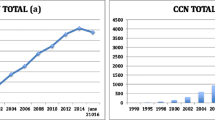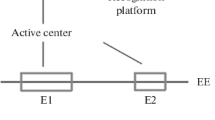Abstract
A unique clone from a human pancreatic cDNA library was isolated and sequenced. Examination of the deduced polypeptide sequence of the clone showed a new form of cysteine-rich domain that included a region with the form of a Cys4 zinc-finger-like metal binding site followed by a complex Cys-His region. Searches of the Swiss-Protein data bank found a similar 48-residue domain in fifteen open reading frames deduced from A. thaliana, C. elegans, S. cerevisiae and S. pombe genomic sequences. The high degree of conservation of this domain (13 absolutely conserved and 17 highly conserved positions) suggests that it has an important function in the cell, possibly related to protein-protein or protein-DNA interactions. The gene recognized by the clone is is localized to human chromosome 16, and is conserved in vertebrates. The 2 Kb message is expressed in various human fetal and adult tissues. An antibody made to a peptide sequence of the deduced protein showed reactivity in immunoblots of monkey lung and retinal subcellular fractions and immunohistochemically in late fetal mouse tissues and a limited number of adult mouse tissues, including pancreatic islets, Leydig cells of the testis, and the plexiform layers of the retina.
Similar content being viewed by others
References
Dawid IB, Toyama R, Taira M: LIM domain proteins. CR Acad Sci Paris 318: 295–306, 1995
Klug A: Gene regulatory proteins and their interaction with DNA. Ann NY Acad Sci 758: 143–160, 1995
Sanchez-Garcia I, Rabbitts TH: The LIM domain: A new structural motif found in zinc-finger-like proteins. Trends Genet 10: 315–320, 1994
Saurin AJ, Borden KLB, Boddy MN, Freemont PS: Does this have a familiar RING? Trends Biochem Sci 21: 208–214, 1996
Pavletich NP, Pabo CO: Zinc finger-DNA recognition: Crystal structure of a Zif268-DNA complex at 2.1 A. Science 252: 809–817, 1991
Pan T, Coleman JE: Sequential assignments of the 1H NMR resonances of Zn(II)2 and 113Cd(II)2 derivatives of the DNA-binding domain of the GAL4 transcription factor reveal a novel structural motif for specific DNA recognition. Biochemistry 30: 4212–4222, 1991
Omichinski JG, Clore GM, Schaad O, Felsenfeld G, Trainor C, Appella E, Stahl SJ, Gronenborn AM: NMR structure of a specific DNA complex of Zn-containing DNA binding domain of GATA-1. Science 261: 438–446, 1993
Luisi BF, Xu WX, Otwinowski Z, Freedman LP, Yamamoto KR, Sigler PB: Crystallographic analysis of the interaction of the glucocorticoid receptor with DNA. Nature 352: 497–505, 1991
Schmeichel KL, Beckerle MC: The LIM domain is a modular proteinbinding interface. Cell 79: 211–219, 1994
Lovering R, Hanson IM, Borden KLB, Martin S, O'Reilly NJ, Evan GI, Rahman D, Pappin DJC, Trowsdale J, Freemont PS: Identification and preliminary characterization of a protein motif related to the zinc finger. Proc Natl Acad Sci USA 90: 2112–2116, 1993
Aasland R, Gibson TJ, Stewart AF: The PHD finger: Implications for chromatin-mediated transcriptional regulation. Trends Biochem Sci 20: 56–59, 1995
Saha V, Chaplin T, Gregorini A, Ayton P, Young BD: The leukemiaassociated-protein (LAP) domain, a cysteine-rich motif, is present in a wide range of proteins, including MLL, AF10, and MLLT6 proteins. Proc Natl Acad Sci USA 92: 9737–9741, 1995
Dawid, IB, Breen, JJ, Toyama, R: LIM domains: Multiple roles as adapters and functional modifiers in protein interactions. Trends Genetics 14: 156–162, 1998
Sambrook J, Fritsch EF, Maniatis T: Molecular Cloning: A Laboratory Manual. Cold Spring Harbor Laboratory Press, Plainview, NY, 1989.
Lathe R: Synthetic oligonucleotide probes deduced from amino acid sequence data. J Mol Biol 183: 1–12, 1985
Chrambach, A, Jovin, TM: Selected buffer systems for moving boundary electrophoresis on gels at various pH values, presented in a simplified manner. Electrophoresis 4: 190–204, 1983
Kozak M: Interpreting cDNA sequences: Some insights from studies on translation. Mamm Genome 7: 563–574, 1996
Böhm S, Frishman D, Mewes HW: Variations of the C2H2 zinc finger motif in the yeast genome and classification of yeast zinc finger proteins. Nucl Acids Res 25: 2464–2469, 1997
Nix, DA, Beckerle, MC: Nuclear-cytoplasmic shuttling of the focal contact protein, zyxin: A potential mechanism for communication between sites of cell adhesion and the nucleus. J Cell Biol 138: 1139–1147, 1997
Wen, W, Meinkoth, JL, Tsien, RY, Taylor, SS: Identification of a signal for rapid export of proteins from the nucleus. Cell 82: 463–473, 1995
Redmond, TM, Yu, S, Lee, E, Bok, D, Hamasaki, D, Pfeifer, K: Characterization of an RPE65 knockout mouse: A model for Leber's congenital amaurosis type II. Invest Ophthalmol Vis Sci 39: S643, 1998.
Author information
Authors and Affiliations
Rights and permissions
About this article
Cite this article
Putilina, T., Wong, P. & Gentleman, S. The DHHC domain: A new highly conserved cysteine-rich motif. Mol Cell Biochem 195, 219–226 (1999). https://doi.org/10.1023/A:1006932522197
Issue Date:
DOI: https://doi.org/10.1023/A:1006932522197




